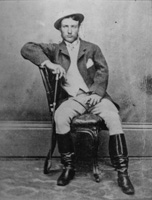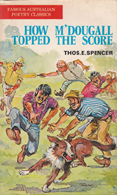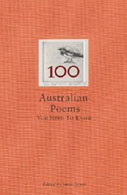Mary Hannay Foott is described in the Australian Dictionary of Biography as "a minor poet", though I suspect this is manily due to the relaively small number of poems she published during her lifetime: Austlit lists only 76. Most of these works appeared in various Queensland newspapers with the odd one or two in The Bulletin. So it was probably more a matter of her lack of exposure rather than anything else. She only published two collections of poems during here lifetime, Where the Pelican Builds and Other Poems in 1885 and Morna Lee and Other Poems in 1890, and wrote very little after the mid-1890s.
I quite like this poem. It is short but gives a good sense of the interplay between nature and men's fortunes - straddling the gap between Charles Harpur and Mary Gilmore perhaps, as there appear to be echoes of both in this work. Where the pelican builds its nest is considered the best country, fertile and well-watered. They prefer large expanses of open water without too much aquatic vegetation which provides perfect breeding conditions for fish, their main source of food. More pelicans implies more fish, which implies more clean water and a better natural environment.
Mary Hannay Foott wrote this poem while she was living in south-west Queensland, an area of the country prone to the classic "droughts and flooding rains". When the pelican arrived in the area everyone would have been acutely aware that good times had returned, and you are left in no doubt that this is what is indicated in this work.
Text: "Where the Pelican Builds" by Mary Hannay Foott
Author bio: Australian Dictionary of Biography
Publishing history: First published in The Bulletin (12 March 1881), and subsequently reprinted in An Anthology of Australian Verse (1907), The Golden Treasury of Australian Verse (1909), Australian Bush Songs and Ballads (1944), Silence Into Song (1968), A Treasury of Australian Poetry (1982), The Macmillan Anthology of Australian Literature (1990), The Penguin Book of Australian Ballads (1993), The Oxford Book of Australian Women's Verse (1995), Classic Australian Verse (2001) and Our Country: Classic Australian Poetry: From Colonial Ballads to Paterson & Lawson (2004).
Next five poems in the book:
"Narcissus and Some Tadpoles" by Victor Daley
"Nine Miles from Gundagai" by Jack Moses
"The Duke of Buccleuch" by JA Philp
"How We Drove the Trotter" by W. T. Goodge



